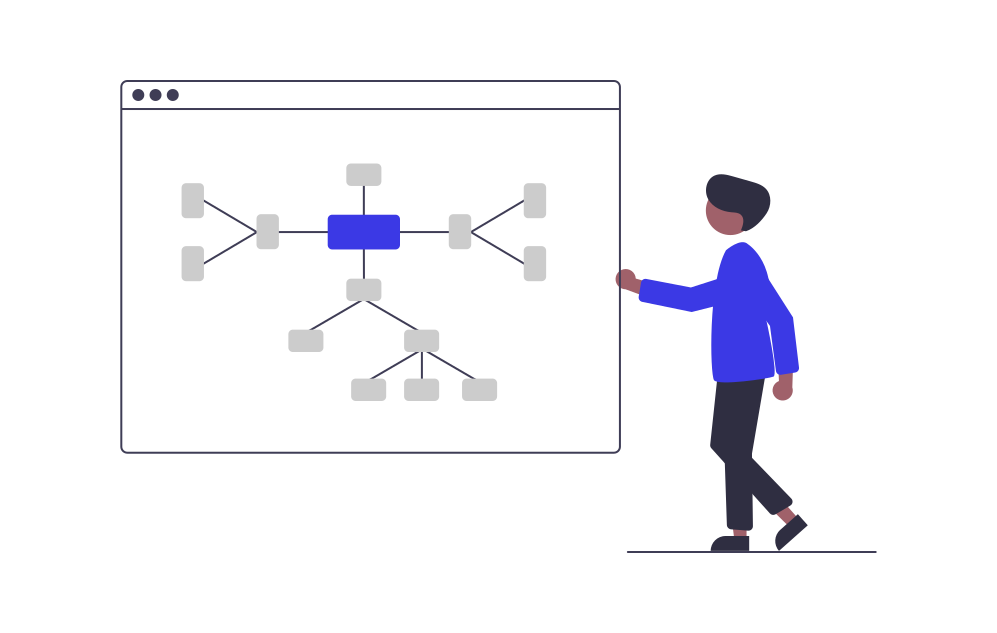Get news, updates, and insights delivered straight to your inbox.
Brand Management Software: What It Is and What Does It Do

Maintaining a brand identity is crucial to your overall brand building and corporate voice development. By providing a consistent experience through brand management, you will build a successful identity, increase market recognition, and attract loyal customers who feel connected to your brand, creating a sense of loyalty.
Branding and brand management is a critical priority for marketers, who must ensure every touchpoint with a prospect or customer aligns with their brand expectations. This important task isn’t easy to accomplish without additional assistance. Fortunately, brand management software can help marketing teams manage this process.
Since content is often the first impression a customer has with your organization, all assets must reflect your brand experience cohesively. A powerful brand management platform can help with that.
What Is Brand Management?
An important part of launching any successful business is building your brand. Your brand is a combination of concrete and abstract elements that uniquely identify your company and differentiate it from your competitors. It includes:
- Visuals such as your logo and color scheme
- Catchphrases and taglines that become associated with your brand
- The tone you adopt in your content
- Any mascots or spokespeople you adopt
- The customers you target
Even where you choose to do your marketing reflects your branding. For example, a company that centers its social media presence on TikTok probably has much different branding than one that is focused on LinkedIn.
Once you establish your brand identity, you have to ensure that everything your company does aligns with that identity. This consideration includes your social media content, website design, blog posts, engagement, email marketing, and more. The process of doing all of this coordination is known as brand management.
It’s not difficult to see how this can be challenging if you have a large marketing team with multiple people creating content, you employ a significant number of customer-facing staff who also need to maintain branding consistency, or you outsource marketing and advertising to a third-party agency.
Unfortunately, as complex as this task can be, it’s absolutely necessary. Brand inconsistency can turn off customers and make your company appear to lack authenticity.
This possibility is why marketing teams often rely on brand management software to help automate some of this process. By implementing a brand management platform, marketing leaders can retain their ability to ensure they stand out to potential customers positively.
What Is Brand Management Software?
Brand management software is a technology that allows companies to create, maintain and distribute branding resources and assets across different platforms, channels and departments more efficiently.
The best way to approach brand management is to create a system of policies, procedures, and best practices. These should set branding standards and guidelines and provide anyone who engages with the public or creates public-facing content with clear guidance on what they should do.
This approach will also include quality assurance procedures that are followed before any content is made available for public consumption.
A brand management platform does this by offering a centralized location to store and maintain branding assets. These will be accessible to all employees responsible for communicating with customers and prospects.
Assets that may be kept and organized within brand management software might include:
- Branding statements and guidelines
- Branding policies
- Logos
- Templates
- Digital images
- Specification sheets
- Channel-specific documents
Any assets that can be useful in ensuring brand coherency, consistency, and impact should be included in your brand management efforts.
What Does a Brand Management Platform Do?
There are many tasks associated with brand management. Your brand management platform provides you with a single place to do all of those things.
For example, brand managers may use the platform to upload new resources and policy documents or delete items that may no longer align with company branding. Content creators will access the brand management platform to review branding guidelines or download assets to use in their content.
For large businesses with multiple sales channels and locations, brand management software makes it so much easier to create appropriate content and distribute it across all platforms and partners fast with minimal bottlenecks.
Why Is Brand Management Software Important in 2022?
In the past, each brand would be responsible for managing communication and engagement through just one or two digital platforms at most. Even if they added pay-per-click campaigns to that, brand management was fairly simple. Now, your company might produce content or communications that appear on:
- Your company website
- Other online publications
- SMS
- YouTube
- TikTok
- Snapchat
- Various messenger apps
It can be nearly impossible to keep up with the content demands of all of these channels, let alone ensure that all content across these channels adheres to your company’s branding guidelines.
This adherence is where a brand management platform can be used to help your marketing team accomplish the branding goals they have established.
At the same time, it also simplifies and automates the work of brand management so that team members have more time and space to engage in other mission-critical activities such as building marketing strategies, creating content, and engaging with your target audience.
Brand Management Software vs. Digital Asset Management
If you are familiar with digital asset management (DAM), you probably see some similarities between it and brand management. Your assumptions are correct. Both do involve managing digital assets. However, there is a significant difference between the two.
Brand management software only focuses on assets and guidelines directly related to a company’s branding. On the other hand, digital asset management involves managing and accessing all digital assets that your business owns.
| Digital Asset Management Platform | Brand Management Platform |
|---|---|
| Suitable for large enterprises and growing organizations | Suitable for large enterprises and growing organizations |
| Good for organizing all company digital assets | Great for organizing and distributing creative and brand-related assets |
| The primary focus is on sharing and organizing files | The primary focus is on improving the collaborative process across different departments |
These include objects that are related to other business areas and functions. For example, you might use DAM to manage assets relating to in-house training programs or hiring.
What Types of Companies Use Brand Management Platforms
Brand management software can be a valuable marketing tool for businesses in various verticals. Any company that cares about presenting a consistent, authentic brand identity will see the value in a brand management platform soon after implementing it.
Digital brand management is useful to any business but is particularly valuable to organizations that engage with audiences on multiple channels with robust content offerings. Technology, finance and banking, manufacturing, retail, e-learning, and healthcare companies all use brand management software.
No matter the industry or size of your business, we offer brand management solutions that scale to meet your needs. Contact the team at MarcomCentral for a free quote.


